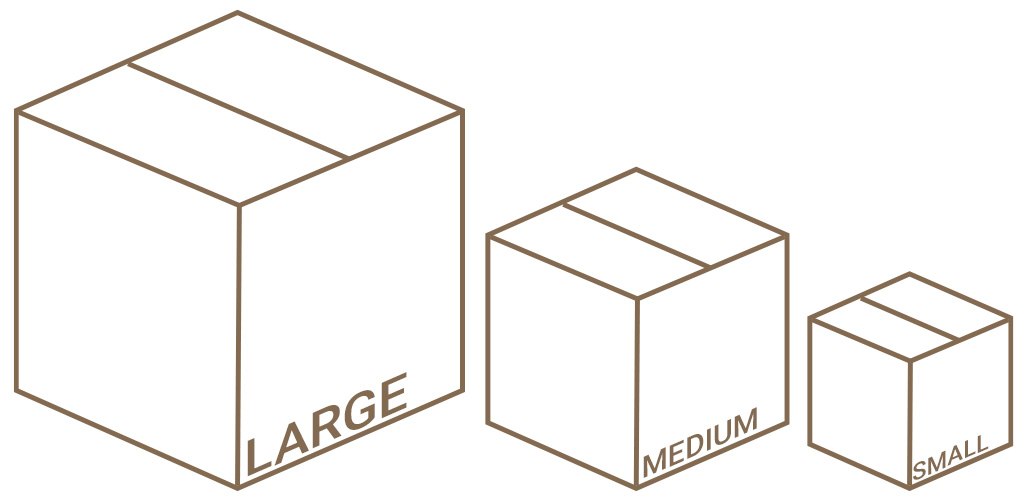Moving can be a daunting task, but with the right guidance and resources, it can become a much easier process. One of the most critical aspects of moving is packing your belongings properly. This article is designed to provide you with a detailed guide on how to use boxes for packing during a move.
Importance of Proper Packing
Whether you’re moving down the street or across the country, careful packing is essential to keep your items safe and secure during transit. Improperly packed boxes can lead to damaged items, more trips, and increased costs. Proper packing also allows for efficient loading and unloading, saving you time and effort.
Types of Boxes for Packing
Understanding the different types of boxes available for packing can help you choose the right one for your items.

Standard Moving Boxes
These are your regular moving boxes, available in small, medium, and large sizes. They are suitable for a variety of household items.
Wardrobe Boxes
These tall boxes come with a metal hanger bar and are designed to hold clothing on hangers.
Picture/TV Boxes
These are slim, flat boxes perfect for packing artwork, mirrors, and flat-screen TVs.
Dish Pack Boxes
These heavy-duty boxes come with cell dividers and are used for packing fragile items like dishes and glasses.
Effective Packing Tips

Use the Right Size of the Box
Ensure to pack heavy items like books or vinyl records in small boxes and lighter items in larger ones. This strategy prevents boxes from becoming too heavy to lift and reduces the chance of damage.
Do Not Overweight: Boxes of large, medium, and small sizes should have the same weight. Up to 30 lbs.
Properly Tape Your Moving Boxes
To ensure the bottom of the box doesn’t give way, secure it with strong packing tape. Tape the bottom seam and then make a few wraps all the way around the box’s bottom edges.
Fill All Spaces: Don’t leave empty spaces in your boxes. Fill any gaps with packing paper, towels, or clothing to prevent items from shifting during transit and causing damage.
Label Each Box
Label each box with its contents and the room it belongs to. This makes unpacking easier and helps movers know which boxes need special care.
The Advantage of Using Standard-Sized Boxes
When preparing for a move, the temptation to use any box available – like those left over from online shopping deliveries – can be strong. However, using standard-sized boxes (in no more than three sizes) can significantly improve the efficiency of your move.
Boxes from online retailers like Amazon or Chewy may seem convenient and cost-effective, but they often come in a variety of sizes and shapes. This variety can create significant difficulties when trying to stack and load them into a moving truck. Non-standard boxes may leave you with wasted space in the truck, leading to more trips and higher moving costs.

Furthermore, these boxes are typically not designed to withstand the weight and pressure associated with moving. They can be of inferior quality and strength, increasing the risk of your belongings getting damaged during the move.
On the other hand, using standard-sized boxes provides the advantage of uniformity. These boxes are easier to stack, maximizing space efficiency in the moving truck. This uniformity can significantly speed up the loading and unloading process, saving you precious time during the move.
Use Standard-Sized Boxes: While it might be tempting to use any boxes you have on hand, using standard-sized boxes can significantly improve the efficiency of your move. These boxes are easier to stack, maximize space in the moving truck, and are typically sturdier, providing better protection for your items.
The boxes used for moving are designed to be strong and sturdy, providing greater protection for your items. Opting for small, medium, and large boxes allows for versatility in packing different items while ensuring that the boxes can be securely and efficiently loaded onto the moving truck.
Remember, while packing for a move, your ultimate goal is the safe and secure transfer of your belongings. Using standard-sized boxes is a small step that can make a significant difference in achieving this goal.
Frequently Asked Questions
It’s not easy to accurately estimate the number of boxes you’ll need, as it largely depends on the number of items you have. A common strategy is to purchase more boxes than you think you’ll need. Most retailers (such as U-Haul, Home Depot, Lowe’s) have return policies, so you can return unused boxes. Remember, it’s better to have too many boxes than too few.
The choice between heavy-duty and regular boxes depends on the distance of your move and the fragility of your items. Heavy-duty boxes are usually double-walled and provide extra protection, making them suitable for long-distance moves (over 500 miles) or for packing fragile items. If your move is less than 500 miles, regular boxes should suffice for most items. However, it’s always a good idea to use heavy-duty boxes for your most delicate belongings, regardless of the distance you’re moving.
Overpacking can lead to boxes tearing or items getting damaged. It’s best to stick to the suggested weight limit for each box size.
While second-hand boxes can be cost-effective, they may not be as sturdy as new ones. If you choose to use second-hand boxes, check them for sturdiness and cleanliness.
Moving doesn’t have to be a stressful process. With the right boxes and packing techniques, you can ensure your items arrive at your new home safe and sound. Happy packing!
